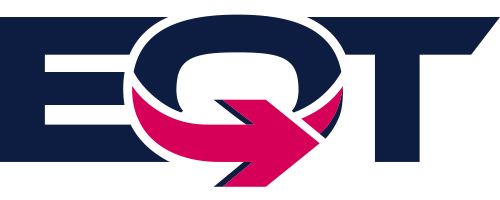The Pittsburgh Cultural Trust’s Arts Education K-12 Residency programs are all custom created for the school/community we are serving. Residencies are led by professional teaching artists, can be in any art form, and have no requirement either for number of days or minimum number of students served. We intentionally design our programming to be accessible to, respectful of, and inclusive for all learners, from all ages, cultures, abilities, and perspectives.
A unique opportunity for students to learn an art form from a professional artist in their community. Arts enrichment is especially useful for schools and after school programs that do not already have a permanent art or music teacher. In addition to learning an artistic craft, students will practice “soft” skills such as creativity, fine motor skills, social emotional learning, and collaboration.
We offer one-off workshops or residencies of 4-12(+) sessions. We can plan the workshop or residency experience around the needs and interests of your students. Timing is also flexible based on the days and times that work best for your teachers and students!
 Teaching Artist: Katalina Salcedo
Teaching Artist: Katalina Salcedo
The Carnival of the Animals by Jack Prelutsky, music by Camille Saint-Saens will introduce children to the beauty of classical music. Each animal in the story moves to its own music and instruments. Children will march like a lion, swim and blow kisses like fish, use graceful arms like birds etc. By the end of the residency, children will be able to identify each piece of music that best exemplifies each animal. Finally, children will create a Carnival of the Animals on the last day, all while dancing out all the movements that were created throughout the residency.
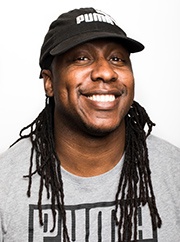 Teaching Artist: Dennis Garner
Teaching Artist: Dennis Garner
A FRESH STEP is an explosive dance class that uses the art of song & syncopated movements to discover the collaborative world of rhythm, timing, and body control. Students will learn and improve on movement fundamentals like timing and polyrhythms. The final session will culminate with a showcase of the students’ original routines. Hear the music... feel the music... BECOME the music!
 Teaching Artist: Joanna Abel
Teaching Artist: Joanna Abel
This residency invites students to explore self-expression, storytelling, and collaboration through dance and creative movement. Students will learn movement vocabulary, create their own choreography, and connect dance to themes of self, family, community, and the natural environment. Each session blends imagination, physical activity, and artistic skills, fostering confidence, creativity, and joyful collaboration.
 Teaching Artist: Joanna Abel
Teaching Artist: Joanna Abel
Play in Motion is a high-energy residency where students explore movement, rhythm, and creativity through games, hula hooping, and imaginative challenges. Each week blends physical activity with problem-solving, teamwork, and artistic expression. Students will learn to move with confidence, think creatively, and collaborate while having a blast. The series will culminate in a showcase for students’ peers and teachers!
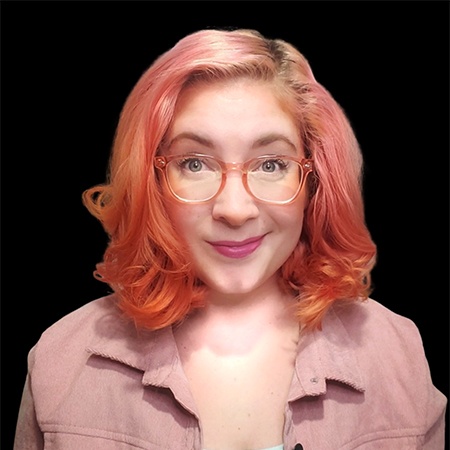 Teaching Artist: Cassidy Adkins
Teaching Artist: Cassidy Adkins
This residency focuses on exploring the elements of dance through a personalized and inclusive approach, allowing each learner to express their individuality. Students will engage with foundational dance concepts while creating their own movement sequences inspired by diverse styles and choreography. Through games, video clips, and guided discussions, they'll discover that dance is accessible to everyone, regardless of experience.
 Teaching Artist: Gabby Wilson
Teaching Artist: Gabby Wilson
This residency takes students on a hands-on journey through different Hispanic art forms. Students will learn an art style specific to each country as well as some of its background. Students will combine all their art into our final session exhibit to showcase.
 Teaching Artist: Jackie Mishol
Teaching Artist: Jackie Mishol
This hands-on and radically accessible approach to filmmaking utilizes the tech we already have in our pockets and our classrooms- no fancy gear necessary- to equip students with the skills and confidence to find and tell the stories of their communities. This residency puts students into action as they learn the essentials of filmmaking - story, camera, lighting, sound and editing - and get to try their hand at making their own movie. Groups may explore documentary, narrative, or serial digital media styles as they are empowered to become curious, confident, and creative citizens of our world today.
 Teaching Artist: Joanna Abel
Teaching Artist: Joanna Abel
Art Explorers is a visual arts residency where students experiment with a wide variety of art forms, from artist trading cards and jewelry-making to chalk murals and puppet design. Each week focuses on a different medium and technique, encouraging students to explore their creativity, develop fine motor skills, and express their ideas visually. The program celebrates experimentation, collaboration, and the delight of making art together.
 Teaching Artist: Barbara Burgess-Lefebvre
Teaching Artist: Barbara Burgess-Lefebvre
Buckle up! In this dazzling class, students take off on a creative journey to design their own theme park attractions. Drawing inspiration from existing franchises or developing entirely original concepts, students will focus on crafting a fascinating experience. Students will learn how to meticulously theme every aspect of their ride, from queue to the ride vehicle to building structure, to bring their imaginative visions to life.
 Teaching Artist: Randall Coleman
Teaching Artist: Randall Coleman
In this class, students will create their own conversation-based podcast. They will learn how to structure a show, have lively interview-style conversations with professional podcasting equipment, and edit their show for publication. The series will culminate in a group presentation where students will share their finished podcasts with the group.
 Teaching Artist: Ayana Sade
Teaching Artist: Ayana Sade
This creative intensive for youth singers, dancers, poets, and actors will sharpen their craft and build confidence. Students will not only improve their performance skills but will also learn how to manage their emotions and to collaborate with their peers. Each session will blend skill training with grounding exercises to calm nerves and spark creativity. The program will end with a live community showcase where participants shine in the spotlight.
 Teaching Artist: Barbara Burgess-Lefebvre
Teaching Artist: Barbara Burgess-Lefebvre
Escape rooms require clever puzzle solving, storytelling, and world building, plus they’re super fun! Your students will create original math- and pattern-based puzzles, write intriguing stories, and situations to challenge their classmates. The series will culminate in a presentation of their concepts, including showcasing a puzzle for their classmates to solve!
 Teaching Artist: Diarra Imani
Teaching Artist: Diarra Imani
Spoken Word Spoken Destiny is an exercise and a practice. Students are guided through meditation, social emotional learning techniques, and will create a group dynamic meant to build the esteem of each participant as a spoken word artist and writer.
 Teaching Artist: Ishara Henry
Teaching Artist: Ishara Henry
This residency invites students to explore how art and photography can serve as powerful forms of activism and self-expression. Students will use visual storytelling to highlight issues that matter most to them, whether personal, school-based, or community-focused, and work collaboratively to create a final collective artwork. The program develops creative skills while empowering students to recognize their voices as agents of change.
 Teaching Artist: Ishara Henry
Teaching Artist: Ishara Henry
In this digital photography residency, students will explore the intersection of visual art, storytelling, and personal identity. Through hands-on practice, editing, and discussion, students will learn how to use light, composition, and perspective to communicate emotions and ideas. Students will build a portfolio of work and finish with a public showcase of their creative voice.
 Teaching Artist: Ishara Henry
Teaching Artist: Ishara Henry
Collage Your Vision is a creative and reflective arts residency that helps participants visually explore and express their goals, values, and identities. Through hands-on collage, guided journaling, and mindfulness exercises, students will build vision boards that connect personal dreams with community care and self-awareness. Sessions balance discussion, exploration, and artmaking to promote empowerment and creative growth.
 Teaching Artist: Ayana Sade
Teaching Artist: Ayana Sade
Experience and engaging program for 12th graders where beauty meets business. Students learn simple systems for managing clients, business banking basics, and the professional skills needed to thrive in the beauty industry. Students will leave the series with a career portfolio and the confidence to step into the workforce or entrepreneurship.
 Teaching Artist: Gil Teixeira
Teaching Artist: Gil Teixeira
In this residency, we will venture into a radically different approach that empowers Music teachers to create original ensemble repertoire on the spot. This Collaborative Music Making Toolkit will help Music, Band and Orchestra Teachers generate new music with each class that will perfectly respond to the skill level and musical taste of each individual student, with the added layer of ownership and belonging associated to any shared creative process.
 Teaching Artist: Joanna Abel
Teaching Artist: Joanna Abel
This Middle Eastern drumming residency introduces students to the joy of rhythm through hands-on learning with traditional percussion instruments. Students will explore core rhythms such as maqsum, malfuf, and ayub, develop listening and coordination skills, and engage in fun games like “What’s for Lunch?” to connect rhythm patterns with creative thinking. Each week blends musical skill-building, cultural learning, and ensemble playing to foster confidence, collaboration, and a deeper appreciation for music from around the world.
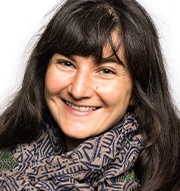 Teaching Artist: Liza Barley
Teaching Artist: Liza Barley
This residency explores the poetry and songwriting of a few different artists as a jumping off point to having students create their own original songs that can then be performed individually or by a larger group. While infusing ELA learning into the music classroom, we are also getting in touch with each student’s self-expression through finding their individual authentic voice and using elements of melody, rhythm, and harmony to powerfully enhance their verbal expression through the composition of original songs.
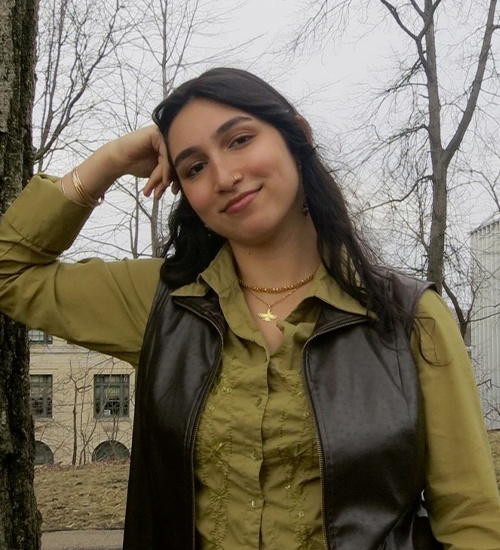 Teaching Artist: Leila Gottlieb Hedayati
Teaching Artist: Leila Gottlieb Hedayati
This course is designed for students to engrain rhythm and creativity into their learning through musical activities! Taking inspiration from Eurhythmics pedagogy, students will learn how to keep a beat, create rhythms, improvise, and analyze music on a deeper level. This course is accessible to all levels of knowledge, as it does not focus on music notation/having experience on a musical instrument. By the end of the course, students will have a beginning level of music theory and composition knowledge to use in their future endeavors, while also having written their first song with lyrics and a “music video”.
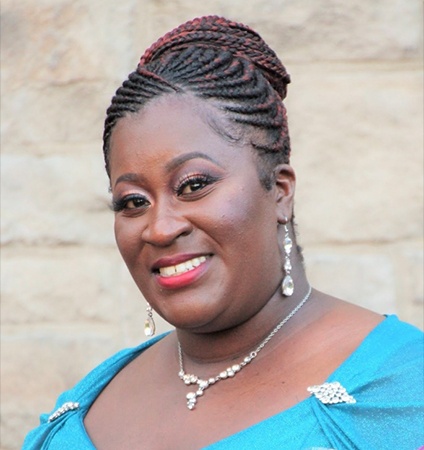 Teaching Artist: Chantal Braziel
Teaching Artist: Chantal Braziel
The of this residency is to teach youth the importance of basic singing, and for them to be creative and passionate in their voices. They will learn the basics of technique such as voice and pitch, and we will go over different styles of music and genres of their liking, either individually or together as a class. The goal for the youth is to enjoy their singing and uniqueness of their own music.
 Teaching Artist: Gil Teixeira
Teaching Artist: Gil Teixeira
The Ukulele is the perfect starting point for any young wannabe singer/songwriter. It's easy to hold, easy to play, and there's lots one can do with it: chords, melodies, percussion, etc. In this workshop we will use the Ukulele as a key to unlock our musical creativity, regardless of any prior musical training, through the creation of original songs. Besides learning how to play the Ukulele, participants in this workshop will also explore different strategies and use a variety of tools for the creation of original lyrics, melodies, vocal harmonies and solid structures for their songs.
 Teaching Artist: Liza Barley
Teaching Artist: Liza Barley
This residency places a violinist/violist with nearly 20 years of teaching experience in strings (violin, viola and cello) into existing string classrooms to support and augment the strings lessons that are already taking place. Specifically catering to instrumental teachers who need an extra hand or would like some fresh techniques or ideas on how to work individually, in small groups, and in large groups with string players from beginner to advanced. We can focus on technique, music reading, improvisational techniques, ear-training and ensemble skills.
Teaching Artist: Cam Chambers
This residency uses the history of African American music from early African drum circles to soul, jazz, blues, Motown and gospel to teach connectivity across genres. Students will find their sense of expression through different musical activities from drumming to singing and discover why certain styles and genres were so important for their time. Students will then create their own songs and perform them at the end of the residency.
 Teaching Artist: Dennis Garner
Teaching Artist: Dennis Garner
This hands-on percussion residency introduces students to the art of drumming through rhythm exercises, basic rudiments, and collaborative performance. Students will explore tempo, dynamics, sticking patterns, and cultural rhythm traditions while building technical skill and musicality. The program emphasizes listening, coordination, and ensemble playing, culminating in a final group performance.
 Teaching Artist: Dennis Garner
Teaching Artist: Dennis Garner
This residency introduces students to the creative and technical aspects of making music, from generating song ideas to producing a finished track. Students will explore beat-making, melody composition, lyric writing, recording, and mixing using industry-standard digital tools. The program encourages both individual creativity and collaborative music-making.
 Teaching Artist: Gil Teixeira
Teaching Artist: Gil Teixeira
The sounds made by traditional musical instruments are just a tiny island in the world of sound. In this residency we will explore the musical potential of that wider world through the combination of deep listening exercises with the exploration of digital samplers and other sonic manipulation tools to create amazing original soundscapes from everyday sounds.
 Teaching Artist: Dennis Garner
Teaching Artist: Dennis Garner
This residency introduces students to the world of DJing as both an art form and a performance skill. Students will learn the history, equipment, and techniques used by DJs, exploring beat matching, mixing, scratching, and set building. By the end of the program, participants will have created and performed a short live DJ set using their new skills.
 Teaching Artist: Gil Teixeira
Teaching Artist: Gil Teixeira
Making something out of nothing is a really hard thing to do. The ABAC pattern is a centuries old trick that music composers/producers have been using to bypass that problem and make beautiful music. In this music making residency we will explore the potential of the ABAC pattern in endless ways: as the shape for a perfect melody, as the structure for an awesome beat, as the form for an entire song, etc.
 Teaching Artist: Cassidy Adkins
Teaching Artist: Cassidy Adkins
Emotions in Motion is an engaging program that combines sensory theatre and social-emotional learning, allowing students to explore and express their feelings through creative and multisensory performance. Utilizing Universal Design for Learning (UDL), this inclusive lab encourages every child to participate in ways that suit their strengths, fostering empathy, self-expression, and collaboration. Students will develop their artistic skills while giving voice to their emotions on stage.
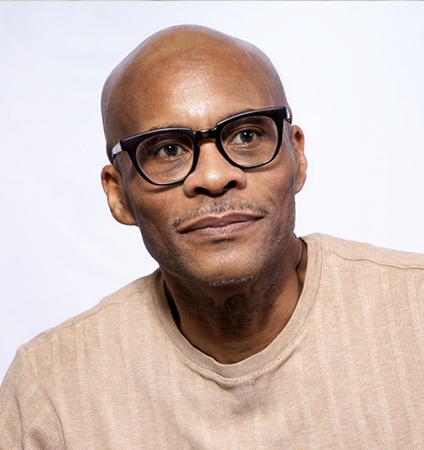 Teaching Artist: David Minniefield
Teaching Artist: David Minniefield
Blending a unique style of energy and fun while engaging in focused dramatic play, students will gain confidence as they are guided through the fundamentals of performing. Students will practice and exercise their memorization and creativity while working together as a team to develop and perform and original skit or play.
 Teaching Artist: Gabby Wilson
Teaching Artist: Gabby Wilson
Grab your tickets because you’ve got the best seat in the house! This residency explores theatrical styles from all over the world, including the United Kingdom, Japan, India, Africa, and Spain. Students will learn about other cultures and examine and create stories, costumes, and props as if they were in these productions in different countries.
 Teaching Artist: Gabby Wilson
Teaching Artist: Gabby Wilson
This residency implements the use of Improv in the world of storytelling. Using fairytales and other well-known children’s stories, students will learn how to create their own take on the stories through dramatic storytelling.
 Teaching Artist: Barbara Burgess-Lefebvre
Teaching Artist: Barbara Burgess-Lefebvre
Once more unto the breach dear friends! Shakespeare can be daunting but doesn’t have to be! This residency will empower your students with lessons on scansion, character development, and performance. Students will leave with a monologue prepared and ready for a performance, competition, or to show off to their families!
 Teaching Artist: Barbara Burgess-Lefebvre
Teaching Artist: Barbara Burgess-Lefebvre
The art of acting can be intimidating! Learning and applying proven technical approaches to acting removes the mystery and frees student actors to explore texts and create characters. Multiple approaches will be taught, and students will apply those techniques in monologues and scenes. Emphasis will be placed on character development and scene analysis, and students will wrap up the series with a final presentation and critique.
 Teaching Artist: Cassidy Adkins
Teaching Artist: Cassidy Adkins
Students will work together to create and perform an original devised theatre piece. The program is highly adaptable: depending on classroom culture, the focus can shift toward scriptwriting, performance, or technical theatre elements to best fit student abilities and interests. Grounded in Universal Design for Learning (UDL), the residency provides multiple entry points and opportunities for students of all skills, levels, and abilities to flourish as creative contributors.
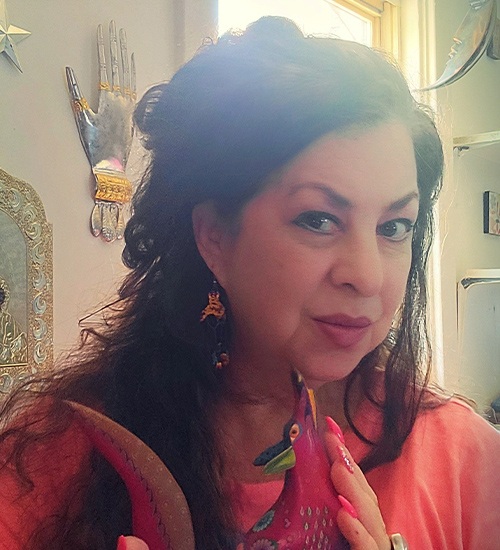 Teaching Artist: Lisa DiGioia-Nutini
Teaching Artist: Lisa DiGioia-Nutini
A brief introduction of the Huichol people of the Mexican Sierras and their artwork will be given to contextualize the work. Examples of both beaded and yarn styles and discussion of techniques will be shown. Emphasis will be placed on respecting elders, nature and animals, trying new things, and experimenting without worrying about mistakes.
 Teaching Artist: Lindsay Woge
Teaching Artist: Lindsay Woge
Architects, artists, scientists, and animal lovers – all are called to join in this artful exploration of the needs of people, animals, and plants, too. Through a mix of activities from big group builds to miniature model-making to drawing and sculpting, participants will imagine and construct shelters, pathways, and spaces where beings of all types can thrive. Each week brings a new challenge – sometimes small, sometimes monumental, but always rooted in care for our shared planet.
 Teaching Artist: Lindsay Woge
Teaching Artist: Lindsay Woge
Pack your pencils—these weekly adventures turn drawing into a journey of imagination and discovery! From mapping secret worlds and inventing shape-shifting creatures to turning “oops” scribbles into masterpieces, artists will explore lines, colors, textures, and stories in playful, hands-on ways. Every week brings a new challenge that blends creativity with building skills and community.
 Teaching Artist: Lisa DiGioia-Nutini
Teaching Artist: Lisa DiGioia-Nutini
Students will paint and/or apply decoupage to Oaxacan woodcarvings, known as alebrijas. A brief history of Oaxacan woodcarvers and painters will be given while a base coat is drying and examples of different painting styles and techniques will be shown. There will also be a discussion of nahuales, or guardian animal spirits, which students may recognize from Disney’s Coco. For K-6 students, emphasis is on believing in oneself, trying new things, experimenting without worrying about mistakes, respect for animals, and tree conservation. For 6-12 students, the same basic concepts are presented, with an added emphasis given to understanding how globalization and political changes endanger Mexican artistic traditions.
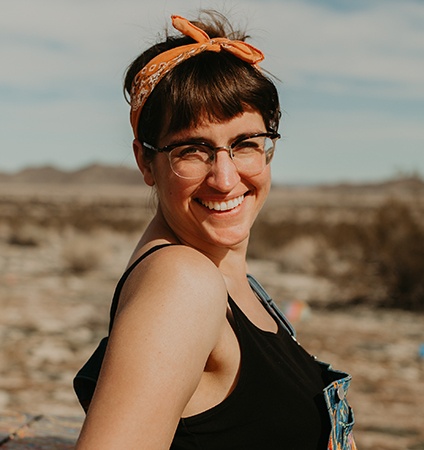 Teaching Artist: Hannah Ditmire
Teaching Artist: Hannah Ditmire
Create art that will have a lasting impact on the students in your care as well as the broader community. Working together with local artist Hannah Goforth, students will learn how to put together a mural or other art piece for display in their school or community. Not only will students be part of the planning process, but they will also take on the task of executing an artwork that is larger than life!
 Teaching Artist: Hannah Ditmire
Teaching Artist: Hannah Ditmire
Does your school or community program lack the resources for providing ceramics for your students? With local artist Hannah Goforth, students will learn the basic techniques of hand building pottery and the process of firing pieces in a kiln.
 Teaching Artist: Lindsay Woge
Teaching Artist: Lindsay Woge
This residency combines creative storytelling with art and design in order to create fanciful small worlds in two and three dimensions. Learners will explore how the concepts of scale and perspective influence how we see, think, and act by exploring books like Spot by Dave Wiesner and They All Saw Cat by Brian Wetzel as well as the wonderful world of miniature-making. While crafting small-scale secret cities, half-pint non-human hideaways, and more, learners will experience art as a portal to a tiny universe of big dreams!
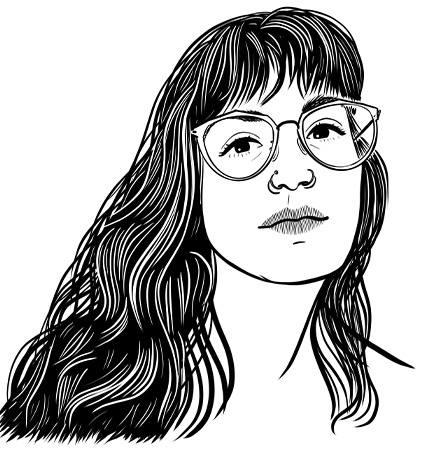 Teaching Artist: Maggie Negrete
Teaching Artist: Maggie Negrete
In this residency, students will use simple paper crafts to learn about story structures and character design. Students move from thumbnailing in mini-zines to full size booklets that can be copied and distributed. Students will design unique and effective characters and book covers. Students will be familiar with basic story structure and its application to their own ideas. Students will complete, reproduce and distribute their own six page booklet.
 Teaching Artist: Conor Coleman
Teaching Artist: Conor Coleman
Nature Art brings an experienced Teaching Artist to your school to facilitate nature-based art experiences, regardless of where your school is located! The TA will utilize what nature there is in and around your school to inspire students’ connection to nature, to self-expression, and to encourage ethical stewardship of our home environments. Students will learn art-making techniques dating back 40,000 years and gain consequent hope and resilience in the face of changing climate realities, all the while growing as a group and having a blast making art!
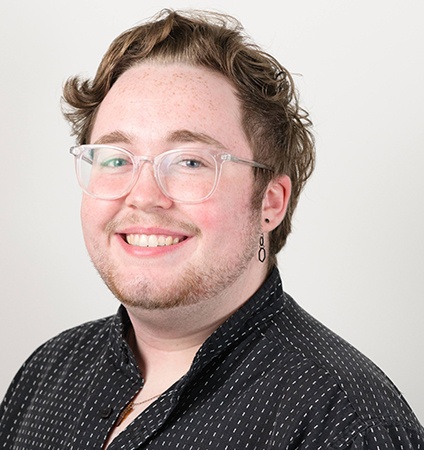 Teaching Artist: Morgan Swartz
Teaching Artist: Morgan Swartz
Students will learn about printmaking and pattern by using found objects like leaves and Legos to create artwork.
 Teaching Artist: Leila Gottlieb Hedayati
Teaching Artist: Leila Gottlieb Hedayati
This series is designed for those who want to learn how to crochet and create items from scratch using crocheting skills! This class is accessible to beginners, as it will start from the very basics of crochet. By the end of the course, students will have a plethora of items to take home that they created in class and a better understanding of crochet basics!
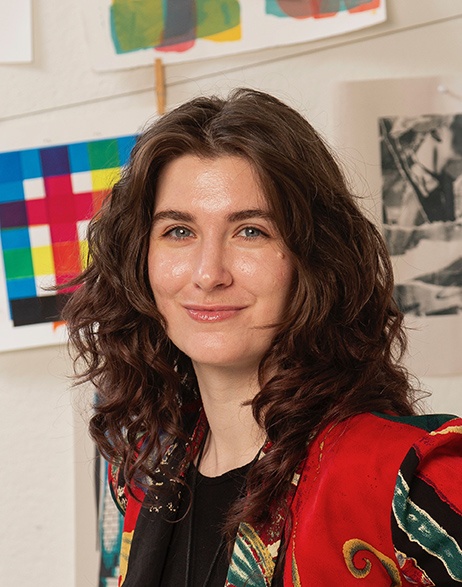 Teaching Artist: Lauren Bailey
Teaching Artist: Lauren Bailey
Learn how to draw in new ways by creating body extensions! Students will experiment with how they can use sculpture to create functional tools for drawing and painting using materials like cardboard, string, egg cartons, and dowels using artists like Rebecca Horn, Karina Smigla-Bobinski, and Sol Lewitt as inspiration. They will explore traditional drawing elements as well as bring in considerations of 3D structures.
 Teaching Artist: Morgan Swartz
Teaching Artist: Morgan Swartz
Students will follow several guided painting sessions to observe and practice composition, painting technique, and color mixing skills. Then they will apply what they learned to their own paintings based on photos they choose or take themselves.
 Teaching Artist: Conor Coleman
Teaching Artist: Conor Coleman
In “Make Your Mark”, students will be able to splash, spray, and scribble their way towards an exciting mural arts project! Week by week, basic visual art competencies will be developed in solo and group formats to strengthen connections to visual arts as a form of self and community expression. Looking to many inspirations - Jazz music, Pittsburgh artists like Andy Warhol and Romare Bearden, and the patterns of nature - campers will locate their own creative power and join forces to create something beautiful. In the process, SEL skills will be developed alongside technical visual art skills across 8-12 exciting weeks of programming. No permanent wall available to be painted on? No problem! Canvas can be hung to allow all students the unique opportunity of expressing themselves at scale.
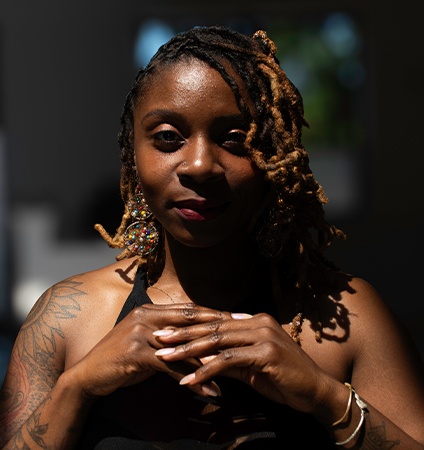 Teaching Artist: Diarra Imani
Teaching Artist: Diarra Imani
Build a world from wonder! Students will tap into SEL skills to create community, discuss ground rules, and use materials such as LEGOs, wooden buildings, and recycled materials to build large skyscapes. Physics and maker-space, STEAM and curiosity meet at the perfect intersections.
 Teaching Artist: Christina Muzzie
Teaching Artist: Christina Muzzie
Students will have fun getting their hands fuzzy as they learn the lifelong skill of hand sewing in a whimsical exploration of fibers, art, and nature. Students will individually create items for them to keep, which may include fabric hand puppets, nature inspired dyed fabric pillows, or stuffies created from their own artwork.
 Teaching Artist: Randall Coleman
Teaching Artist: Randall Coleman
In this class, students will learn about historical African American figures and their contributions to the world. They will then learn to colorize said figures and bring color to their historical black and white photographs. Through this series, students will gain a better understanding of African American history, feeling more connected to historical figures by modernizing photos of them.
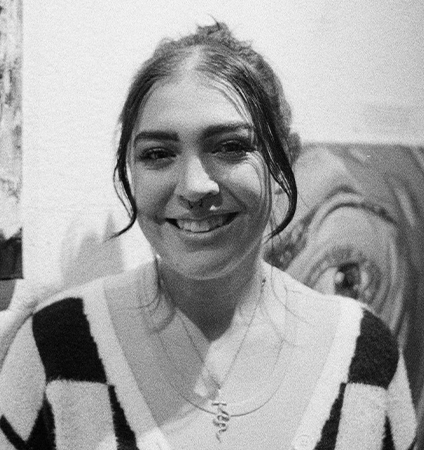 Teaching Artist: Caroline Heckman
Teaching Artist: Caroline Heckman
‘The Art of Self: Exploration Through Portraiture’ will foster self-expression, emotional exploration, and creative thinking in students through various introspective creations, leading up to a final self-portrait and resulting classroom gallery show. By incorporating elements of art and a variety of mediums, students will get to create their own self-portrait that represents them emotionally and develop their artistic voice and style. Students will explore their identities and develop unique artistic styles by experimenting with various mediums and techniques. There will be a balance between technical skills and personal expression, building both emotional intelligence and confidence in art skills.
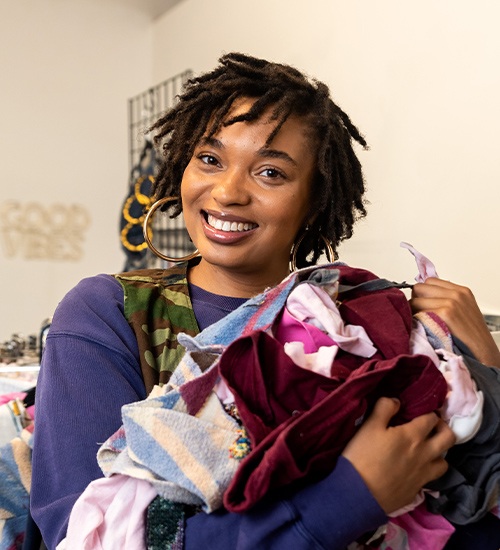 Teaching Artist: Imani Batts
Teaching Artist: Imani Batts
This residency focuses on using fabric as a medium for visual art. Students will create art pieces by repurposing and redesigning textiles, learning about sustainability while exploring creative expression through fabric manipulation, collage, and mixed media techniques. The workshop encourages both artistic development and eco-consciousness.
 Teaching Artist: Lauren Bailey
Teaching Artist: Lauren Bailey
Students will learn how to make paper using recycled materials such as paper bags and egg cartons to turn into magazines! With their new paper, they will learn how to sew together a simple book and create their custom book that features a print from each student. Students will leave the series with a new notebook and an understanding of how to hand sew, decorating with wet and dry materials, and basic color theory.
 Teaching Artist: Hannah Ditmire
Teaching Artist: Hannah Ditmire
This arts enrichment course is perfect for a school or organization with potter’s wheels on site, but no one to teach students how to utilize this magnificent tool. Local artist Hannah Goforth will guide students through the basics of creating thrown pieces of pottery and give students the opportunity to glaze their work to create fully functional artwork.
 Teaching Artist: Morgan Swartz
Teaching Artist: Morgan Swartz
In this residency, students will learn about relief block printing by carving and printing their own designs. They will experience different block types such as clay, wood, and rubber, and print on different materials including paper and fabric.
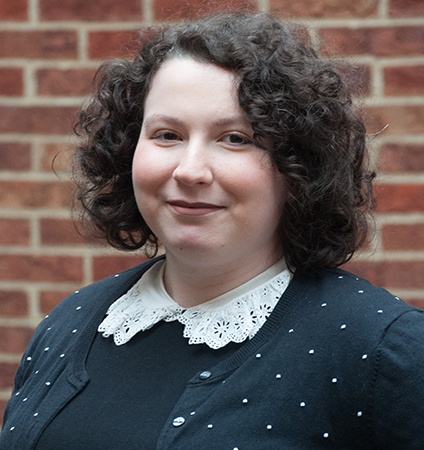 Teaching Artist: Lydia Aceto
Teaching Artist: Lydia Aceto
Students will learn about sequential art (comics) and learn how to create their own short comic. This comic will be adapted from a work of literature of their choosing, allowing them to engage more closely with this work and to learn the skill of adaptation. Over the course of this class students will produce a 4-5 page comic that adapts a section of the work they choose (this can be contemporary literature or can be restricted to classic literature).
 Teaching Artist: Lauren Bailey
Teaching Artist: Lauren Bailey
Etching is a printmaking technique that prints what’s below the surface instead of on top, A.K.A. the opposite of relief printmaking! In this residency, students will learn how to make etchings using an acid free technique called drypoint. CDs are a fantastic surface for etchings and a way to combine this ancient art form with modern technology! Students will leave class with a new edition of prints, and an understanding of printmaking techniques.
 Teaching Artist: Imani Batts
Teaching Artist: Imani Batts
In this residency, students will learn how to transform old clothing and materials into new, creative pieces while promoting sustainability. Through hands-on projects and design challenges, participants will explore the environmental benefits of upcycling and develop practical skills in fashion design and innovation.
 Teaching Artist: Christina Muzzie
Teaching Artist: Christina Muzzie
Use a printed image from a photo or magazine to create your own stuffie ornament! In this workshop, participants will explore a process to transfer images on to fabric and embellish them with embroidery. Make a keepsake from magazine photos of pop icons, an important historical figure that has meaning to you, or a whimsical mash up animal that you create from your imagination!
 Teaching Artist: Lauren Bailey
Teaching Artist: Lauren Bailey
In this residency, students will learn how to screenprint from the very beginning! They will not only learn how to create and design an image for class, they will also build the screens themselves using fabric, embroidery hoops and frames. Each student will make an edition of prints and at the end exchange with each other, so they have a complete collection of prints from the class.
 Teaching Artist: Imani Batts
Teaching Artist: Imani Batts
This sustainable fashion extensive educational residency old teaches students how to transform old clothing and materials into new, creative pieces while promoting sustainability. Through hands-on projects and design challenges, participants will explore the environmental benefits of upcycling and develop practical skills in fashion design and innovation.
Engage students in fresh new ways by integrating the arts into your non-arts curriculum. Arts Integration residencies meet standards and objectives from art and core academic subject areas. They are often project-based and provide unique opportunities for assessment and learning.
Research shows that arts integration practices foster deep learning of core academic content, encourage collaboration and creative problem solving, build social-emotional learning, improve the classroom climate, and so much more!
Early Learning Through the Arts Program
The Pittsburgh Cultural Trust is proud to be one of 27 regional affiliates – and the only Pennsylvania-based site – of the internationally-acclaimed Wolf Trap Institute for Early Learning Through the Arts.
With the goal of supporting early childhood learning curriculums through the integration of performing arts teaching techniques, the Trust Arts Education’s Western Pennsylvania Wolf Trap program provides 27 innovative arts-in-education experiences for children ages birth to 6 and their teachers & families.
Using elements of drama, music, and movement, not only are children’s physical, cognitive, and socio-emotional developments supported, but they also help create active, joyful, and child-centered learning environments. Opportunities within the Wolf Trap program include:
- Professional Development workshops for early childhood educators
- Customized 10-session classroom residency
- Supplementary Wolf Trap classroom materials, resource guides, a classroom gift, and take-home materials
Connecting Math & Word Problems with Dance & Creative Movement
Essential Question: How can we use our bodies and movement to understand and solve math word problems?
Objectives:
- The students will be able to use movement to represent addition and subtraction situations.
- The students will be able to solve word problems by physically modeling them with peers.
- The students will be able to perform short movement phrases that show a word problem and its solution.
- The students will be able to collaborate in small groups to create and present dances based on word problems.
- The students will be able to use imagination and physical expression to model problem-solving strategies.
Connecting Social Emotional Learning with Dance
Essential Question: How can movement and dance help us understand ourselves, connect with others, and build a caring community?
Objectives:
- The students will be able to identify and express at least 4 different emotions using movement.
- The students will be able to demonstrate cooperation and respect while creating and performing group dances.
- The students will be able to reflect on personal feelings and peer contributions through verbal and nonverbal responses.
- The students will be able to connect creative movement to real-life ideas (emotions, friendships, community)
Connecting Science/Environmental Literacy & Sustainability with Visual Arts/Mixed Media
Essential Question: How do we know what makes a place valuable or meaningful? What would it look like to create spaces that welcome all beings?
Objectives:
- The students will be able to make careful observations of their schoolyard and nearby environments, noting physical characteristics and nonhuman presence.
- The students will be able to represent sounds, sights, and patterns through collage, mark-making, sculpting, and mapping.
- The students will be able to explain multiple values of a place (aesthetic, ecological, recreational) and compare human-centered vs. multispecies perspectives.
- The students will be able to create and assemble a natural-materials mobile that expresses shared meaning, interconnection (“tangles”), and balance.
Connecting Math with Bookmaking & Printmaking
Essential Question: How does math help us tell stories?
Objectives:
- The students will be able to identify shapes and explain their significance.
- The students will be able to fold paper into parts and explain it using fractions.
- The students will be able to define a book, explain the parts, and put a simple book together.
- The students will be able to define printmaking and how to make a print.
- The students will be able to create a word problem and communicate a problem using math terms.
Connecting English Language Arts & Social Emotional Learning with Music Composition & Songwriting
Essential Question:
- How can we aid the students in relating to each other, their environment, and their society?
- How can we increase critical thinking through creation?
- What is familiar among us, and how do we interpret language, tone, and emotions?
- How can we develop an awareness of mental growth and development?
Objectives:
- The students will be able to combine skills of reading, writing, analyzing, and creating with words and soundscapes.
- The students will learn about the complexities of song structure in relation to phrasing in writing.
- The students will be able to analyze songs through learning about story arc, then attribute those skills to reading comprehension and world building within a book/story.
- The students will find community with their classmates through group analysis and collaboration.
Connecting Social Studies with Visual Art
Essential Question:
- How does knowing the contexts, histories, and traditions of art forms help us create works of art and design?
- How does collaboration expand the creative process?
- How do artists and designers determine whether a particular direction in their work is effective?
- How do artists and designers learn from trial and error?
- How does collaboratively reflecting on a work help us experience it more completely?
Objectives:
- The students will be able to define and create their own zines as individuals and in small groups.
- The students will be able to define typography and experiment drawing letters.
- The students will be able to define and create their own manifesto in small groups.
- The students will be able to correctly identify key figures in the Chicano Farm Workers Movement, i.e. Dolores Huerta and Cesar Chavez.
- The students will be able to collaborate effectively with their peers.
Connecting English Language Arts with Theatre & Media Arts
Essential Question:
- How can an artist use an immersive experience to give an audience the experience of a novel or story?
- How does a themed attraction or experience add to appreciation and understanding of the original material?
Objectives:
- The students will be able to define key concepts in a piece of literature (conflict, protagonist, antagonist, setting, theme, mood).
- The students will be able to interpret literature using those key concepts.
- The students will be able to sketch (in words or images) original ideas for the ways that their themed lands (attractions, restaurants, shops) create or reveal characters, location, tone.
- The students will be able to plan (in words, images, or 3D) the experience your audience will have in your lands.
- The students will be able to develop the details of the immersive experiences (could work on these in groups).
- The students will be able to communicate the details of their plans to the larger group in a presentation.
Connecting History & Social Studies with Multidisciplinary Art (Theatre, Visual Arts, Media, Creative Writing)
Essential Question:
- How does art represent and reflect on history?
- How does that representation affect both their contemporary society and future generations?
- In what ways can the arts help us express and understand diverse stories about our past and present?
Objectives: Students will explore and interpret how art represents and reflects history by engaging with multiple examples across different time periods. They will demonstrate their understanding by choosing from a variety of formats such as discussion, writing, visual art, performance, or multimedia to express how a historical event, figure, or idea is represented through art.
Connecting English Language Arts with Theatre & Media Arts
Essential Question:
- How can an artist use an immersive experience to give an audience the experience of a novel or story?
- How does a themed attraction or experience add to appreciation and understanding of the original material?
Objectives:
- The students will be able to define key concepts in a piece of literature (conflict, protagonist, antagonist, setting, theme, mood).
- The students will be able to interpret literature using those key concepts.
- The students will be able to sketch (in words or images) original ideas for the ways that their themed lands (attractions, restaurants, shops) create or reveal characters, location, tone.
- The students will be able to plan (in words, images, or 3D) the experience your audience will have in your lands.
- The students will be able to develop the details of the immersive experiences (could work on these in groups).
- The students will be able to communicate the details of their plans to the larger group in a presentation.
Connecting Life Sciences with Visual Art & Mixed Media
Essential Question:
- How do camouflage and mimicry help us understand natural selection?
- Are there other explanations besides natural selection for these outcomes?
- Do humans seem to exhibit any behaviors that are similar to camouflage and mimicry?
Objectives:
- The students will be able to explain the types of advantages that animals can gain by using camouflage or mimicry.
- The students will be able to expand their comprehension of these dynamics to include examples such as auditory mimicry.
- The students will be able to understand the dynamics of natural selection that underlie these outcomes in nature.
- The students will be able to demonstrate their grasp of the above content by inventing and “documenting” their own imaginary version of these camo/mimicry dynamics using drawing, collage, photography, writing, or audio recording.
Connecting English Language Arts with Performing Arts, Documentary Theatre, & Devised Theatre
Essential Question:
- Regarding a classic text – How is this required reading text relevant and why does it matter? How does it relate to our lives?
- What does literature tell us about our world and how can it inform, guide or change us and our world?
Objectives:
- The students will be able to convey and justify clear, distinct literary and artistic perspectives while presenting their information and findings in a developed artistic work revolving around or inspired by their classroom text.
- The students will be able to initiate and participate in a range of collaborative discussions on grade level topics, texts, issues, and artistic ideas to then synthesize and relate this knowledge and personal experiences to generate a piece of collaborative, creative work that builds on others’ ideas and express their own.
- The students will be able to integrate conventions and knowledge of both Devised & Documentary Theater techniques and required English Language Arts text to deepen understanding of required reading text and relate works within their societal and cultural contexts to develop a truly one-of-a-kind, interdisciplinary and cross-cultural piece of theatre work.
Connecting History with Performing Arts, Documentary Theatre, & Devised Theatre
Essential Question:
- Regarding a specific historical period – Why study this historical event/period now?
- Why does it matter or how does it relate to our lives now?
- What does our history tell us about our world today, and how can knowledge of our past history inform, guide, or change us and our present world?
Objectives: Students will be able to convey and justify clear, distinct historical and artistic perspectives while presenting their information and findings in a developed artistic work revolving around or inspired by their current history unit.
Connecting English Language Arts with Drama
Essential Question:
- What purpose do stories accomplish in our life?
- How do ancient stories impact us today?
- How can we contribute to our human experience of storytelling?
Objectives:
- The students will be able to identify character archetypes and story beats within the Hero's Journey, comparing and contrasting stories from cultures around the world.
- The students will be able to write their own story using character archetypes and the Hero's Journey.
- The students will be able to perform a devised piece of their story.
Connecting Spanish & Social Studies with Mexican Sculpture & Papercraft
Essential Question:
- How does knowing the contexts, histories, and traditions of art forms help us create works of art and design?
- How do artists and designers determine whether a particular direction in their work is effective?
- How does art help us understand the lives of people of different times, places, and cultures?
Objectives:
- The students will be able to recognize Mexico and its capital on a map.
- The students will be able to define and make a zine.
- The students will be introduced to piñatas as a cross-cultural object.
- The students will learn the piñata song.
- The students will be introduced to the history of cartonería.
- The students will identify alebrijes as an artistic movement.
- The students will identify the artist, Pedro Linares.
- The students will confidently papier mache.
- The students will explore paper crafting skills to repeat patterns.
- The students will experiment with symmetry.
- The students will practice thumbnailing as an artistic skill.
- The students will complete one papier mache piñata in the shape of an animal of their choosing, decorated in the spirit of alebrijes.
Connecting Pennsylvania History with Film
Essential Question:
- How do we want to be remembered? Who gets to write history and why?
- What if we all wrote history?
- Importance of Artists / Dissident, alternative voices?
- In the present day, what will - and can - our history be?
- Aren’t artists historians?
Objectives: Through study of the stylistic, political, and sociocultural contributions of cultural & commercial leaders and innovators Fred Rogers and Andy Warhol, students will explore the idea of art as artifact, as they contextualize grade appropriate central issues and themes while learning artistic and technical techniques of creative and visual digital storytelling in the process of making their own unique pieces of video art.
Learn how to produce a musical in your classroom! Teaching Artists will guide teachers and students through the process of producing a piece of musical theatre on a small scale. Students will make a story come to life through acting, singing, and dancing. This program is intended to spark interest in theatre and teach musical theatre fundamentals that will prepare students and teachers to produce a musical on a larger scale in the future.



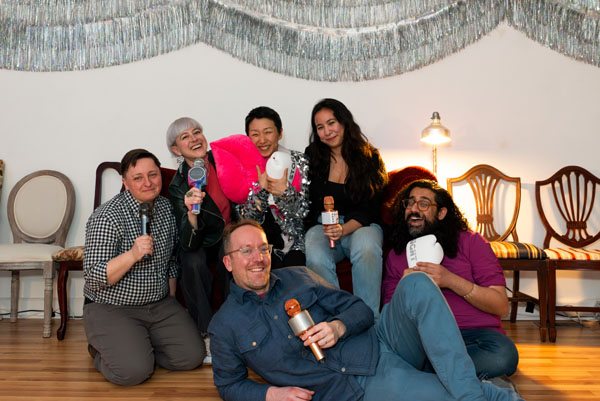

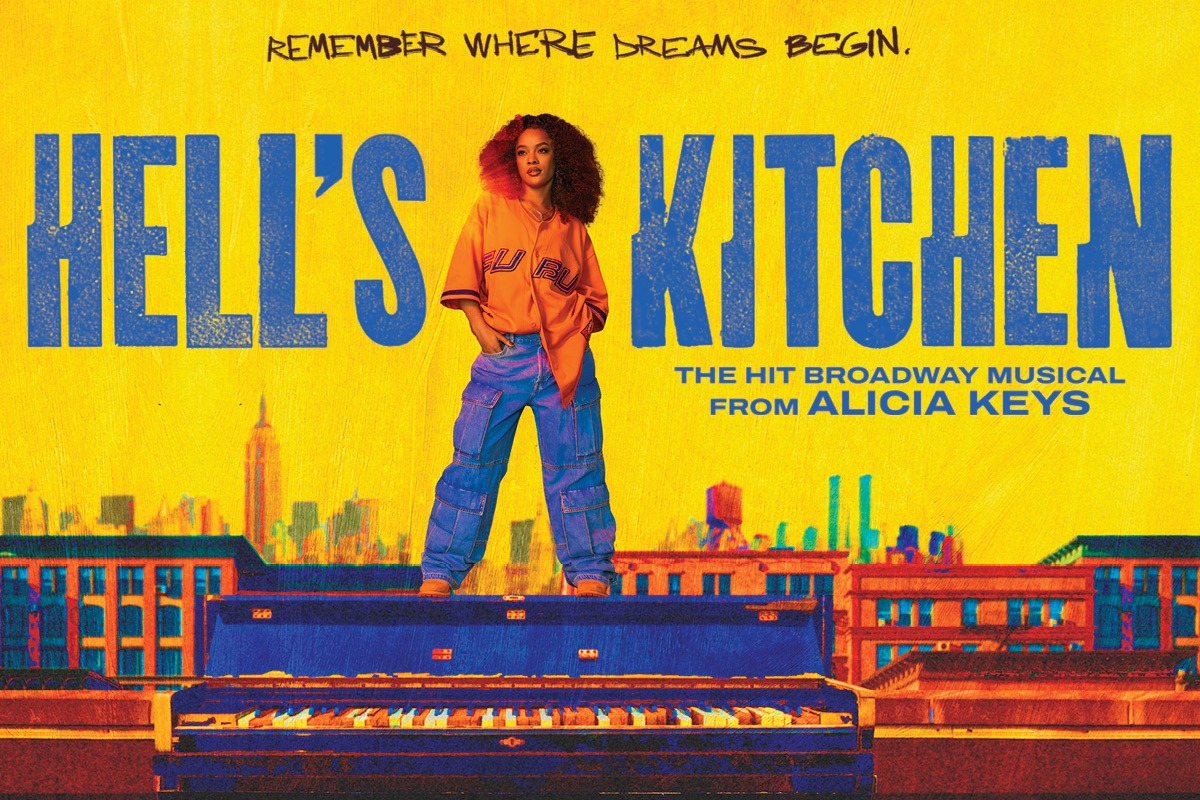
 Teaching Artist: Katalina Salcedo
Teaching Artist: Katalina Salcedo Teaching Artist: Dennis Garner
Teaching Artist: Dennis Garner Teaching Artist: Joanna Abel
Teaching Artist: Joanna Abel Teaching Artist: Cassidy Adkins
Teaching Artist: Cassidy Adkins Teaching Artist: Gabby Wilson
Teaching Artist: Gabby Wilson Teaching Artist: Jackie Mishol
Teaching Artist: Jackie Mishol Teaching Artist: Barbara Burgess-Lefebvre
Teaching Artist: Barbara Burgess-Lefebvre Teaching Artist: Randall Coleman
Teaching Artist: Randall Coleman Teaching Artist: Ayana Sade
Teaching Artist: Ayana Sade Teaching Artist: Diarra Imani
Teaching Artist: Diarra Imani Teaching Artist: Ishara Henry
Teaching Artist: Ishara Henry Teaching Artist: Gil Teixeira
Teaching Artist: Gil Teixeira Teaching Artist: Liza Barley
Teaching Artist: Liza Barley Teaching Artist: Leila Gottlieb Hedayati
Teaching Artist: Leila Gottlieb Hedayati Teaching Artist: Chantal Braziel
Teaching Artist: Chantal Braziel Teaching Artist: David Minniefield
Teaching Artist: David Minniefield Teaching Artist: Lisa DiGioia-Nutini
Teaching Artist: Lisa DiGioia-Nutini Teaching Artist: Lindsay Woge
Teaching Artist: Lindsay Woge Teaching Artist: Hannah Ditmire
Teaching Artist: Hannah Ditmire Teaching Artist: Maggie Negrete
Teaching Artist: Maggie Negrete Teaching Artist: Conor Coleman
Teaching Artist: Conor Coleman Teaching Artist: Morgan Swartz
Teaching Artist: Morgan Swartz Teaching Artist: Lauren Bailey
Teaching Artist: Lauren Bailey Teaching Artist: Diarra Imani
Teaching Artist: Diarra Imani Teaching Artist: Christina Muzzie
Teaching Artist: Christina Muzzie Teaching Artist: Caroline Heckman
Teaching Artist: Caroline Heckman Teaching Artist: Imani Batts
Teaching Artist: Imani Batts Teaching Artist: Lydia Aceto
Teaching Artist: Lydia Aceto
